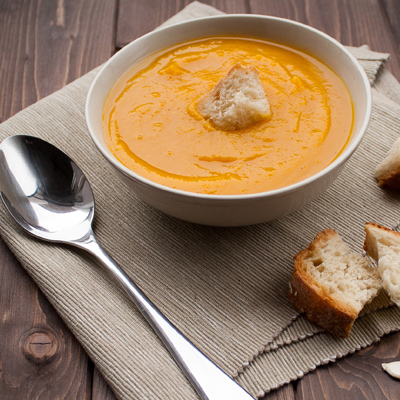- Strawberries
- Cook With Apples
- Grapes
- Grapefruit
- Lemons
- Cabbage
- Asparagus
- All About Bulb Vegetables
- All About Cruciferous Vegetables
- Squash
- All About Root Vegetables
- The Gift of Spice
- Thyme
- Basil
- Raspberries
- All About Tuber Vegetables
- Marjoram / Oregano
- Lemongrass / Citronella
- All Our Fruits, Vegetables and Fresh Herbs
- All About Exotic Fruits
- All About Legumes
- Cooking Pears: Three Inspirational Methods
Coriander / Cilantro

The coriander seed is one of the oldest spices in the world, cultivated in Egypt for more than 3,500 years. The leaves of the plant, also called Chinese parsley or cilantro, have a very unique, penetrating, strong scent that is pleasing to many but that others feel tastes too strong. Today, it is prized in Latin America and even more so in Asia.
Cilantro looks a lot like parsley. It has soft, flat, feathery leaves and a tender stem that can grow to one metre in height. Cilantro leaves have a very distinct aniseed taste and pungent aroma. The seeds of this herb are referred to as coriander and are very aromatic, sweet and reminiscent of orange zest.
Culinary Tips and Advice
- Like parsley and chervil, fresh coriander is used as a seasoning as well as a decorative garnish.
- In Asia, particularly in Thailand, coriander is used in soups, salads, sauces and sandwiches.
- Goes best with raisins, couscous, brown rice, braised cabbage, stuffing, salads and sandwiches, soups and Asian and Mexican dishes. It also brings a touch of freshness to desserts with strawberries, mangoes or green apples.
- Use with discretion as it can be very surprising to the uninitiated.
- Avoid washing the leaves under running water or risk darkening the leaves. Fill a large bowl with water, and soak them in it.
- Coriander is available all year long in your Metro supermarkets.
Storage Life
Fresh coriander is very fragile and will keep longer in the refrigerator if its roots are kept in water, like a bouquet, and its leaves covered with plastic. Fresh coriander can also be frozen and used without thawing.












